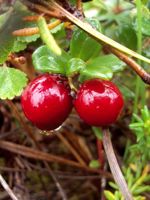Mon-Fri 9am - 5pm Mountain time
Cherry Go Round™ Reblooming Hydrangea vs Small Cranberry
Hydrangea macrophylla Hokomaburlac
Vaccinium oxycoccos
NOT AVAILABLE THIS SEASON - MIGHT RETURN
CUSTOM GROW
Cherry Go Round Reblooming Hydrangea™ is a compact flowering shrub. The deep red flowers will bloom in late spring and last until fall. The mophead-like flowers add multi season interest to your landscape. The petite form is well suited for urban yards and tight spaces.
Flowers grow on old wood which requires only spent flowers and damaged wood to be removed. The Cherry Go Round Reblooming Hydrangea is part of the Bloomin’ Easy® collection.
On the prairies, some customers will plant the Cherry Go Round Reblooming Hydrangea in pots and over winter them in their garage. They need additional winter protection for the flower buds.
Note: Flower colour may be influenced by the soil pH. In more alkaline soils the flowers will emerge more pink whereas those in acidic soils will be a deep purplish red. They prefer slightly acidic soils with a pH of 5.7-6.5.
Small Cranberry is a native evergreen groundcover found in bogs, fens, and wet meadows. It produces delicate pink flowers that attract a variety of pollinators, including bees, and it serves as both a nectar source and host plant for the Bog Fritillary (Boloria eunomia) butterfly. By late summer, the plant bears deep red berries that are eaten by both wildlife and people. With their high pectin content, the berries are well-suited for making jams and jellies.
Often creeping among sphagnum moss, Small Cranberry thrives in cold, acidic, and nutrient-poor soils (pH 2.9–4.7), making it well adapted to northern wetland environments. With its woody stems, it is technically classified as a shrub and often described as a subshrub or dwarf shrub. It is also valuable for wetland restoration and naturalisation projects.
Note: We use Small Cranberry for Vaccinium oxycoccos. This species is also known by many other common names, including Bog Cranberry, Small Bog Cranberry, and others. Please confirm the scientific name to ensure you are ordering the correct plant.

